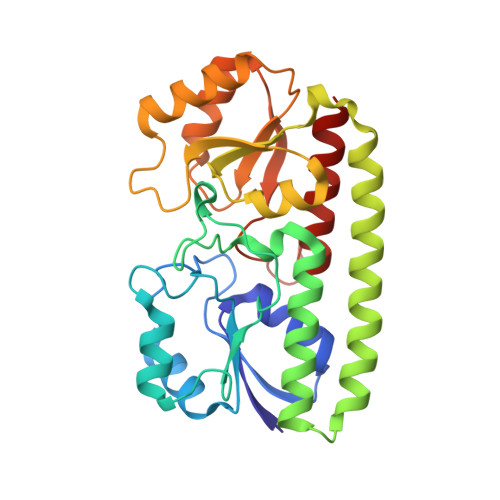Imperfect coordination chemistry facilitates metal ion release in the Psa permease.
Counago, R.M., Ween, M.P., Begg, S.L., Bajaj, M., Zuegg, J., O'Mara, M.L., Cooper, M.A., McEwan, A.G., Paton, J.C., Kobe, B., McDevitt, C.A.(2014) Nat Chem Biol 10: 35-41
- PubMed: 24212134
- DOI: https://doi.org/10.1038/nchembio.1382
- Primary Citation of Related Structures:
3ZK7, 3ZK8, 3ZK9, 3ZKA - PubMed Abstract:
The relative stability of divalent first-row transition metal ion complexes, as defined by the Irving-Williams series, poses a fundamental chemical challenge for selectivity in bacterial metal ion acquisition. Here we show that although the substrate-binding protein of Streptococcus pneumoniae, PsaA, is finely attuned to bind its physiological substrate manganese, it can also bind a broad range of other divalent transition metal cations. By combining high-resolution structural data, metal-binding assays and mutational analyses, we show that the inability of open-state PsaA to satisfy the preferred coordination chemistry of manganese enables the protein to undergo the conformational changes required for cargo release to the Psa permease. This is specific for manganese ions, whereas zinc ions remain bound to PsaA. Collectively, these findings suggest a new ligand binding and release mechanism for PsaA and related substrate-binding proteins that facilitate specificity for divalent cations during competition from zinc ions, which are more abundant in biological systems.
Organizational Affiliation:
1] School of Chemistry and Molecular Biosciences and Australian Infectious Diseases Research Centre, University of Queensland, Brisbane, Australia. [2] Institute for Molecular Bioscience, University of Queensland, Brisbane, Australia. [3].
















